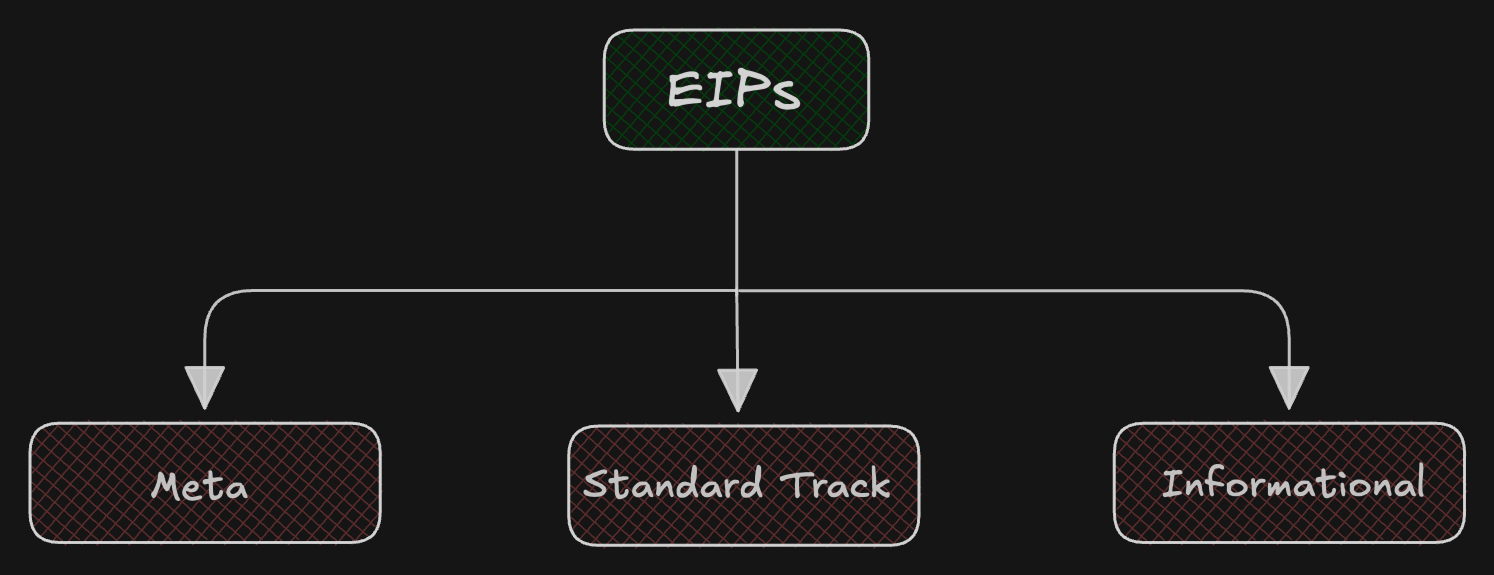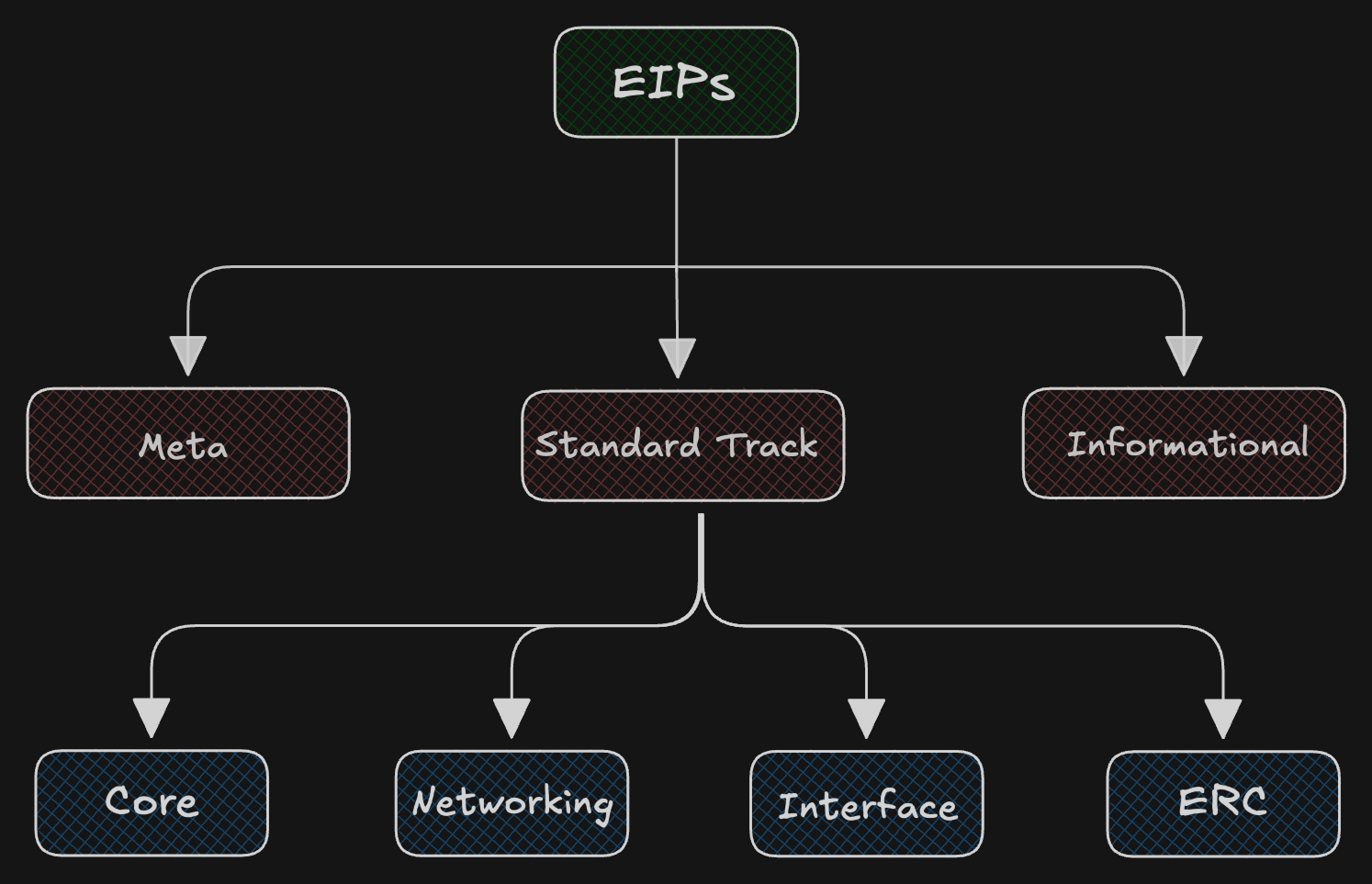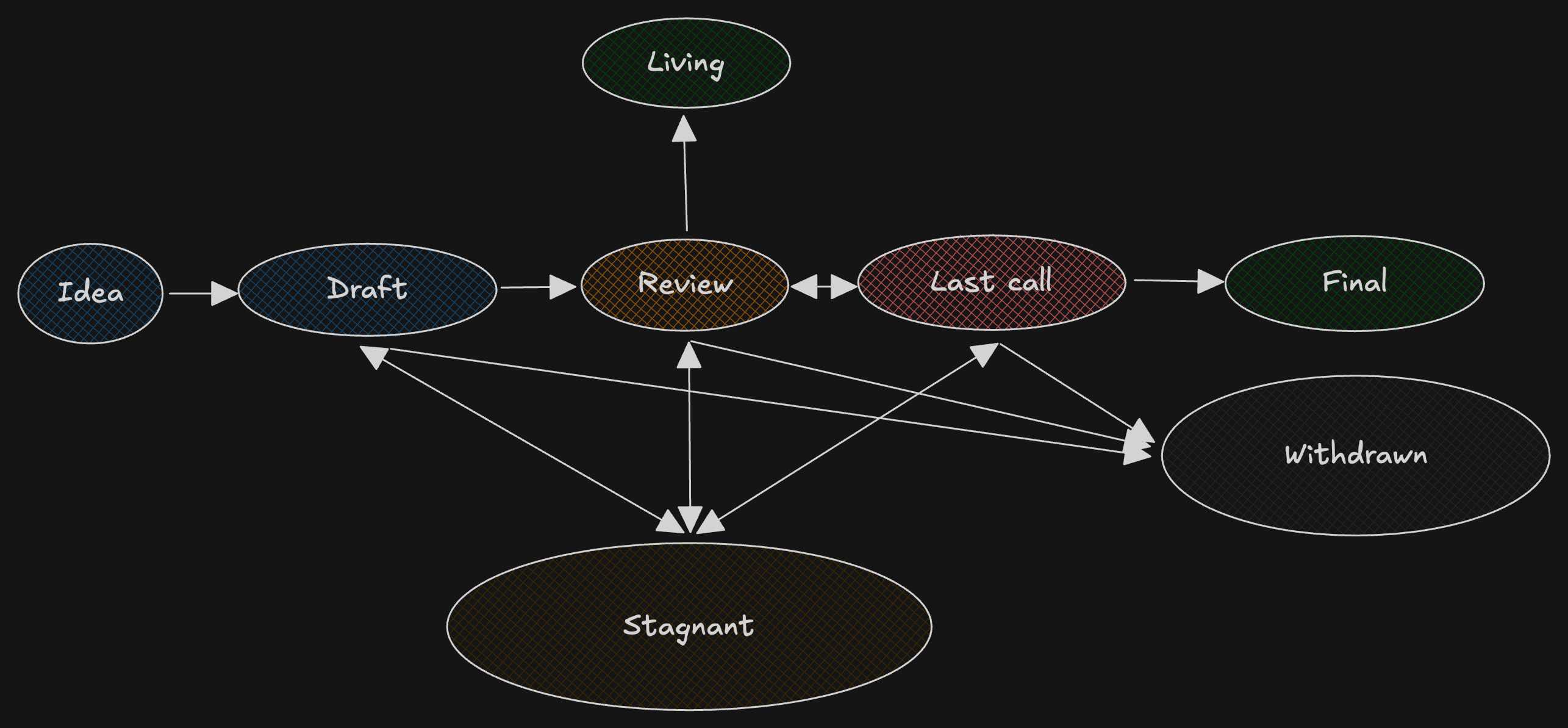This content originally appeared on HackerNoon and was authored by Utkarshini Arora
Before jumping into Ethereum and starting coding, one must first understand EIPs. This guide will give you a walkthrough of EIPs and how they shape the Ethereum ecosystem.
https://youtu.be/mQiATxj2Jmg?embedable=true

Table of Contents
- Prerequisite
- What are EIPs?
- Why do we need EIPS?
- Types of EIP
- Considerations
- Summary
Ethereum development thrives on EIPs, which are an integral part of its adaptability and growth. In this guide, we will cover EVERYTHING about EIPs so that you understand them and use them to your benefit at will in your journey of exploring Ethereum.
\

Prerequisite
This is the introductory blog to EIP. Some familiarity with terms like “Ethereum” and “blockchain” will be enough.
\

What are EIPs?
The Web3 and blockchain ecosystem is mostly open source, and all major chains often implement methods by which the community can submit suggestions for changes in methodologies and standards.
These are known as Improvement Proposals, and in the Ethereum ecosystem, they are Ethereum Improvement Proposals (EIPs).
In Bitcoin, it is called BIPS, in Solana, it is called SIMDs, which we will not jump into in this blog but you can explore my channel to know more.
All EIPS are a design doc that provides information to the ETH community about:
- Feature: Its technical specification
- Rationale: Why is this improvement needed or what is the motivation behind this proposal
- Process: How is it implemented
If EIPs get enough traction, they will generate a Request for Comments. In Ethereum, these are known as Ethereum Request for Comments (ERCs).
\
📒 Note
All EIPs are numbered chronologically! ERC20 is the 20th request for comments that was created.
\ To track the progress of any New Improvement Proposals and Requests for Comments, you can check out websites such as eips.ethereum.org and this repo.
\

Why do we need EIPs?
https://x.com/arorautkarshini/status/1948292214154801499?embedable=true
\ Blockchain systems like Ethereum thrive on decentralized, immutable and community-driven innovation.
Decentralized means that anybody can be a part of this network without a governing entity.
Immutable means that once anything is deployed on the Ethereum blockchain, it cannot be changed ever.
Community drives innovation by contributing to this decentralized network and keeps bringing further development to the Ethereum ecosystem. EIPs make sure that:
Enable transparent collaboration
Ensure compatibility across applications
Provide a roadmap for future enhancements
\
💡
How does Ethereum manage to streamline this process while preserving its integrity and security?
\ Let’s dig deeper.
\

Types of EIP
The development of Ethereum happens on many different levels. All EIPs are categorised based on which level the upcoming feature or change will take place. They are separated into a number of types, and each has its own list of EIPs.
There are three broad categories:
Standard track EIP
Meta EIP
Informational EIP
\

\ Standard Track EIP (ST-EIP): This refers to any modifications that affect a change in a network protocol, any existing proposed standards, or anything that affects the interoperability of applications using Ethereum. This is further divided into:
- Core
- Networking
- Interface
- ERC
Let’s go through them one by one.
\

\ Core
This contains all improvements that require a consensus fork, for eg:
EIP 225: Introduces Proof of Authority algorithm for testnets
EIP 3675: Introduced the much-awaited upgrade from Proof of Work to Proof of Stake consensus mechanism
\
Networking
Includes improvements around network protocols like whisper and swarm, and devp2p
ERP 627: Specifies the format of whisper messages
\
Interface
Any improvements around client API/RPC specifications and standards, language-level standards and contract ABIs
EIP 6: Renaming the “SUICIDE” opcode to “SELFDESTRUCT”
EIP 1193: Introduced Provider JavaScript API for dApps
\
ERC
This defines the application-level standards including contracts like token standards, URI schemes, library formats, and account abstraction.
ERC 20: Token standards
ERC 721: NFT standards
ERC 1155: Multi Token Standard
\
Meta EIP
Also called Process EIP, defines the guidelines, procedures or decision-making processes involved in Ethereum development. They may propose an implementation but not to Ethereum codebase, rather to certain processes or events.
EIP 1: Guidelines for EIPs
\
Informational EIP
Covers basic guidelines and information for the ETH community. It does not propose a new feature and users are free to ignore this.
EIP 2228: Recommends consistent naming conventions across web3 ecosystems for Ethereum mainnet
\
💡
How does an EIP become standardized?
\ Let’s find out.
\

EIP status terms
All EIPs go through a process which ultimately decides whether the EIP is approved or rejected.
\

\ Idea
The inception phase is where concepts are brainstormed. This is a pre-draft. It is not tracked within the EIP Repository but this is where all the magic begins.
\ Draft
First formally tracked stage of an EIP in development. This is proposed by the community and awaits approval. An EIP is merged by an EIP Editor into the EIP repository when properly formatted.
EIP 4337: Popular yet still unapproved, in Draft stage
\
Review
An EIP Author marks an EIP as ready for review. It is open for peer feedback and refinement.
\ Last Call
Final review window for an EIP before moving to Final. An EIP editor will assign Last Call status and set a review end date (last-call-deadline), typically 14 days later. During this period, if any changes are still required, it will revert the EIP to Review.
\ Final
Approved and ready for implementation. Changes at this stage are minimal. The EIP represents the final approved standard.
The PR from last call to final only contains the status update.
- status: Last Call
+ status: Final
The PR would look something like the above. Some examples are:
- ERC 20: The most popular one is a smart contract that also holds tokens
- ERC 1155: Multi Token Standard that lets you transfer many different types of tokens with one contract
- ERC 2135: Consumable Digital Assets
- ERC 721: One of the most popular standards is Non-Fungible Token Standard ( NFT ) ERC 2981: NFT Royalty Standard (NFT rights holder earns royalty when sold ) ERC 4519: Non-Fungible Tokens Tied to Physical Assets ERC 7007: Verifiable AI-Generated Content Token
- ERC 2981: NFT Royalty Standard (NFT rights holder earns royalty when sold )
- ERC 4519: Non-Fungible Tokens Tied to Physical Assets
- ERC 7007: Verifiable AI-Generated Content Token
- EIP 1193: Provider JavaScript API
\ Stagnant
Any EIP in Draft, Review or Last Call if inactive for a period of 6 months or greater is moved to Stagnant. However, that's not the end of the world. It may be resurrected from this state by the Authors or EIP Editors through moving it back to Draft.
\ Withdrawn
The EIP Author(s) have withdrawn the proposed EIP. This state has finality and can no longer be resurrected using this EIP number. If the idea is pursued at a later date, it is considered a new proposal.
\ Living
A special status for EIPs that are designed to be continually updated and not reach a state of finality.
One of the EIPs is in a living status, called EIP 1, it is always updating, never finalized, which we talked about earlier as well.
\

Summary
As you know that once anything is deployed on a blockchain, it is immutable, it cannot be changed, ever. However, that doesn’t mean that the development stops.
Further improvements are made through this extremely organized process of EIPs, which can be used by the community safely as it is audited and reviewed carefully. Ethereum is ever-growing and it is the reason why developers are able to interact with blockchain in a seamless manner, which is easy to understand. To learn more about Ethereum, you can visit this website and follow their GitHub repo here.
\

\
:::info About Author: A Bitcoin maxi and blockchain educator, Utkarshini Arora is a chain-agnostic developer working across Web3, DeFi, and full-stack mobile and web development, with a mission to educate 100K+ learners through content and mentorship.
:::
\
This content originally appeared on HackerNoon and was authored by Utkarshini Arora
Utkarshini Arora | Sciencx (2025-08-07T10:58:24+00:00) How To Build Anything On Ethereum – The Ultimate Guide To EIPs. Retrieved from https://www.scien.cx/2025/08/07/how-to-build-anything-on-ethereum-the-ultimate-guide-to-eips-2/
Please log in to upload a file.
There are no updates yet.
Click the Upload button above to add an update.
